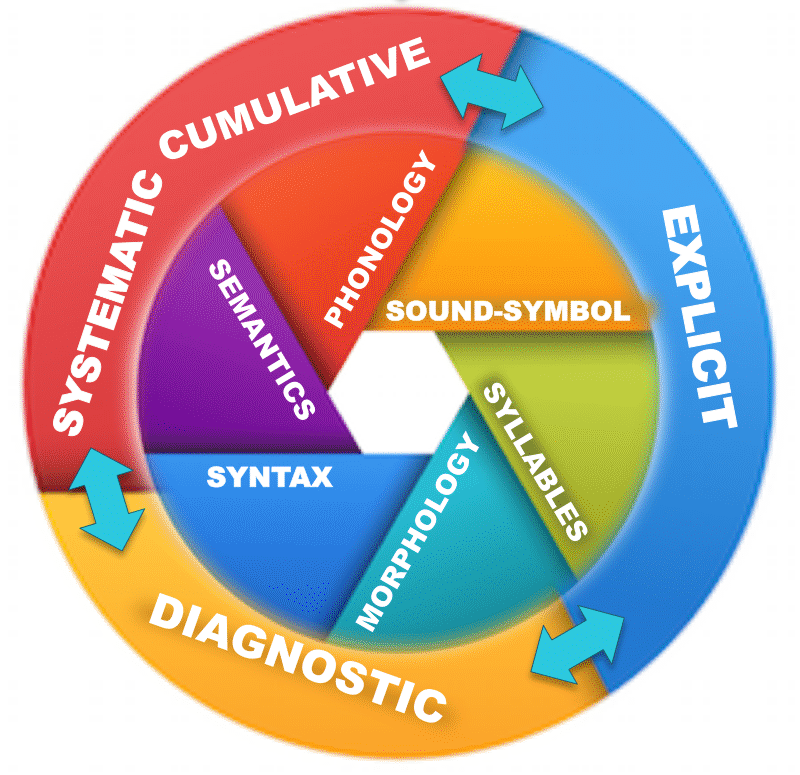Instruction Matters
In search of the right treatment for dyslexia
When a child is struggling to learn to read, parents, teachers, and other professionals naturally want to help the child. Searching for answers about dyslexia on the internet can lead to conflicting information about what types of treatments are best. Widespread misunderstanding about the nature of dyslexia can lead well-meaning people to suggest treatments that are not helpful and may even be harmful. Parents and schools may not always know whose advice to take when multiple treatment options are available.
What makes a treatment controversial?
Treatments are considered to be controversial when they are not consistent with the standard treatments recommended by experts in the field. Often these treatments are based on incorrect ideas about the nature and causes of dyslexia. For example, years of research evidence have shown that dyslexia is a language-based learning disability. Yet, there are many people who promote treatments that are based on an assumption that dyslexia is a vision problem. Treatments are also controversial when they lack well-designed research studies that have shown that the treatment works for the population in question, such as children with dyslexia. A well-designed study attempts to minimize potential bias in its design, execution and interpretation of results.
Parents and educators must also be very cautious when learning about treatments that claim to “cure” dyslexia or other learning disabilities. People who promote such treatments often claim that their product will cure not only dyslexia, but a wide variety of other conditions as well. Remember, as the old saying goes, if it sounds too good to be true, it probably is.
Why are these treatments appealing?
It is difficult to watch children struggle and not know how to help. Parents and teachers, understandably, want to fix this problem for them as quickly and easily as possible. As a result, advertisements for these questionable treatments tend to appeal to our emotions. They use attractive pictures and other graphics to make their products look good. They also rely on testimonials as evidence that they work. Parents may relate to the stories of others and think, well, if it worked for them, it should work for us too. However, anecdotal evidence (i.e., testimonials) alone cannot be trusted as proof that a treatment works. In addition, false information about dyslexia can appear in the news or on social media, leading educators and parents to believe that certain treatments are appropriate and widely accepted. Parents may even be told to use unproven treatments by well-meaning professionals who may or may not have evaluated their child.
 |
 |
What are some examples of controversial treatments for dyslexia?
- Vision-based treatments such as colored lenses or glasses, colored paper or overlays, glasses with low-power lenses when vision is normal, and vision therapy for dyslexia
- Fonts created specifically for people with dyslexia
- “Brain training” games
- Movement-based treatments (e.g., exercises focused on crossing the midline such as passing a ball from one side of the body to the other, walking on a balance beam, etc.)
Why are these problematic?
Early intervention for students at risk of reading problems is crucial. When we wait too long to provide the right kind of treatment, it is much more difficult, if not impossible, for these students to catch up to their peers. When treatments that are not supported by research are used, precious time and money are wasted. For example, school personnel may waste time copying all of a child’s work onto a specific color of paper instead of spending time teaching the child how to read. Parents may spend thousands of dollars on treatments that do not address the underlying problem and do not result in improved reading skills.
"When we wait too long to provide the right kind of treatment, it is much more difficult, if not impossible, for these students to catch up to their peers." |
So, what is an effective treatment for dyslexia?
Because dyslexia is a language-based learning disability, treatment must focus on improving language skills that are necessary for reading. Educators typically refer to this type of treatment as reading intervention. This intervention can be provided by trained teachers who work inside or outside of the school. Students must be taught the skills that help them to readily recognize words on the page, read text fluently, and comprehend what they are reading. These skills must be taught in a direct, explicit manner by well-trained teachers. Structured Literacy is a term that describes this instructional approach. Please see our Fall 2020 newsletter for a longer discussion on the type of instruction that is essential for students with dyslexia.
|
|
|
The elements (inner circle) and teaching principles (outer circle) of Structured Literacy © 2016 Cowen for IDA |
In addition to intensive instruction that is supported by research, students with dyslexia also need accommodations to help them access grade-level material and to demonstrate what they have learned. Examples of accommodations include extra time to complete assignments and tests that involve reading, oral testing, and notetaking assistance. Assistive technology such as text-to-speech software can help students access written content that is difficult for them to read. Audiobooks allow students to gain information from material that is above what they are able to efficiently read. Emotional support is also important to help students deal with feelings of frustration or embarrassment. The best outcomes for students can be obtained when we focus our energy and resources on treatments that directly address language skills, which is consistent with what we know about dyslexia and reading development.
What Works for Dyslexia |
|
|
|
1) Structured Literacy
2) Accommodations
3) Assistive Technology
4) Emotional Support |
More resources on this topic from the International Dyslexia Association can be found below:
- “False Claims Mislead about Dyslexia Treatment” https://dyslexiaida.org/false-claims-mislead-about-dyslexia-treatment/
- “How to Counter Vision-Based Claims about Dyslexia ‘Cures’” https://dyslexiaida.org/how-to-counter-vision-based-claims-about-dyslexia-cures/
- Perspectives on Language and Literacy: Evaluating Interventions for Reading Instruction (Winter 2020) https://mydigitalpublication.com/publication/?m=13959&i=655062&p=2
- Perspectives on Language and Literacy: Controversial Therapies for Dyslexia (Winter 2011) https://app.box.com/s/eztvfm1j7h8ii8evaoke2uhnyg803dn5
More information on research evidence for reading interventions can be found within the article below:
- Petscher, Y., Cabell, S.Q., Catts, H.W., Compton, D.L., Foorman, B.R., Hart, S.A., Lonigan, C.J., Phillips, B.M., Schatschneider, C., Steacy, L.M., Terry, N.P., & Wagner, R.K. (2020). How the Science of Reading Informs 21st-Century Education. Reading Research Quarterly, 55(S1), 267–282

Erin Alexander, Ed.S., NCSP, CALT
Assistant Director for Clinical Services
Tennessee Center for the Study and Treatment of Dyslexia
615-494-8880
dyslexia@mtsu.edu
@DyslexiaMTSU
@MTSUDyslexia Center
mtsudyslexia




